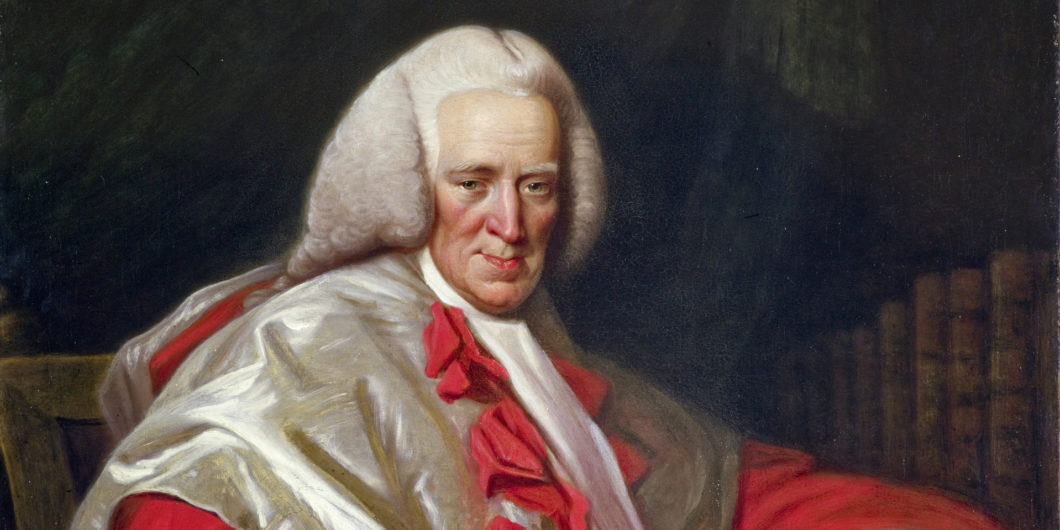Henry Home, Legal Historian Par Excellence
The latest volume in the Liberty Fund’s series of writings by Henry Home, edited and with an Introduction by James A. Harris, will be a most welcome and valuable contribution to the library of anyone who has an interest in the history of law and, specifically, the place of property and its relation to liberty in that history. Historical Law-Tracts, which appeared originally in 1758, went through four editions, was translated into French, and was well known to Americans (John Adams, Thomas Jefferson, and James Wilson among them) who were important in the Revolution and in establishing America’s legal and constitutional framework.
Henry Home (1696-1782) was a central figure in the so-called Scottish Enlightenment, being a founding member of Edinburgh’s Philosophical Society. He knew and was influenced by Francis Hutcheson; David Hume was his close friend; and he was a benefactor to Adam Smith. His philosophical interests and his philosophical differences with Hutcheson and Hume need not concern us here, for they have little bearing on his Historical Law-Tracts.
Home is best understood, even with the greater influence of the reception of Roman law in Scotland, as a jurist who stood in the tradition of Edward Coke, John Selden, and Matthew Hale. He was a historian par excellence of Scotland’s Court of Session—the supreme civil court of Scotland, the jurisdiction of which covers all matters of property—having written in 1728 Remarkable Decisions of the Court of Session from 1716 to 1728, in 1741 the two-volume The Decisions of the Court of Session from Its Institution to the Present Time, in 1757 Statute Law of Scotland Abridged with Historical Notes, and, while its legal scope is broader its focus remains that of property law, Historical Law-Tracts. In 1752, Home was appointed a judge in the Court of Session, when he received the title of Lord Kames. In 1765, he became a member of the High Court of the Justiciary, Scotland’s supreme criminal court.
The present volume consists of 14 tracts or essays, covering such topics as criminal law (Tract I), promises and covenants (Tract II), property (Tract III), regalities (involving the territorial jurisdiction of judges, where individuals are distinguished by their place of residence, Tract VI), the courts (civil, criminal, ecclesiastical, and admiralty, Tract VII), process in absence (legal proceedings in the absence of the defendant, Tract IX), execution against moveables, land, and the person for payment of debt (Tracts X and XI), complications surrounding inheritance (Tracts XII and XIII), and old and new extent (taxation, requiring valuation of land and census, Tract XIV).
While the interesting Tract VII deals with the distinctions between different courts according to the respectively different causes of legal action appropriate to each—property, public injury, religion and manners, maritime and seafaring—and while there is some discussion of the problems that may arise when their jurisdictions seem to conflict (for example, ecclesiastical courts have jurisdiction over disputes over the appointment of ministers while civil courts, responsible for property, are responsible for the ministers’ entitlement to their stipends), one will unfortunately not find a detailed examination of how the jurisdictions between the civil and ecclesiastical courts in Scotland changed over time, specifically before and after the Reformation. Once again, the focus, while not exclusive, of Historical Law-Tracts is property, as one would expect from a then sitting judge of the Court of Session, Scotland’s highest civil court. Editor Harris has provided a most useful and necessary Glossary of Legal Terminology as an aid to the reader.
Each tract provides a historical overview of the legal topic specific to it. For example, Tract I, criminal law, gives a history of criminal prosecution with its attendant examination of the development of the recognition of public interest. Tract IV, securities upon land for the payment of debt, describes the historical development of the designation of the transfer of property by symbol, for example the writ and its registration, rather than merely by verbal agreement. Tract XIV, old and new extent, contains a brief history of taxation in Scotland.
Kames the Comparativist
Not only are the similarities and differences between Scottish law and English law discussed, but Kames in his historical analysis also compares Scottish law and its development with the laws of the ancient Israelites, Athenians, Romans, Visigoths, Burgundians, Salians, Almanni, Thuringi, and Frisians. His citations range from the Bible to Justinian’s Code and Institutes to Bracton, Glanvil, Fleta, Coke, Selden, and so forth.
Moreover, in his pursuit of a historical and comparative analysis of the law, Kames not only drew upon those histories that one would expect (for example by Herodotus and Tacitus), but also histories of Japan and Persia. He further exploited various travelogues in pursuit of legal comparison, for example, of the inhabitants of Guinea and the Cape of Good Hope.
Needless to say, his speculative history of the development of property, presented in Tract I, from the wandering hunter-gatherers to settled agriculturalists who require mutual defense against more powerful neighbors, while it may still be entertained by many today, is antiquated. We now know that property relations, contracts, and judicial systems to enforce those relations are to be found in our earliest existing historical evidence—for example, in Sumerian and early Akkadian laws, more than 1,600 years before the founding of Rome. Of course, Kames did not have access to the Sumerian and Akkadian laws; but he surely would have been inclined to use them if they had been discovered during his life. What we have with the Historical Law-Tracts, beyond its examination of Scottish and English law, is a noteworthy, relatively early example of, and also a call for, the historical and comparative analysis of law.
The call for a historical and comparative analysis of the law by no means arises solely from the conclusion of my reading of the Historical Law-Tracts. Kames explicitly recognized what he viewed to be the necessity of historical analysis to understand the law properly. He argued that “law in particular becomes then only a rational study when it is traced historically.” He thought, rightly it seems to me, that:
A statute, or any regulation, if we confine ourselves to the words, is seldom so perspicuous as to prevent errors, perhaps gross ones. In order to form a notion of any statute, and to discover its spirit and intendment, we ought to be well informed how the law stood at the time, what defect was meant to be supplied, or what improvement made. These particulars require historical knowledge; and therefore, with respect to statute-law at least, such knowledge appears indispensable.
Thus, with this approach to what Kames thought was required to understand the law, the purpose of the book was, in his words, “to excite an historical spirit . . . in those who apply themselves to law.” Kames bemoaned what he characterized as “the neglect of the history of law.”
One evident problem he addressed with the publication of Historical Law-Tracts was (to repeat Cicero’s observation from De Oratore, which he cites) to forestall the lawyer’s becoming nothing more than “a circumspect and sharp kind of pettifogger, a crier of legal actions, a chanter of legal formulas, a trapper of syllables.”
Still Plagued with Pettifoggers
The problem has been a continual one, as we see in the famous descriptions of lawyers in William Shakespeare’s Henry the Sixth and Charles Dickens’s Bleak House. Very much in the spirit of Kames’s recognition of this problem was Stephen M. Sheppard’s cri de coeur, in his 2015 essay for Law & Liberty, “Where Did the Noble Lawyer Go?: Looking for Cicero in the Boardroom or on the Billboard.” Of course, law schools, even if they should recognize the merit of Kames’s and Sheppard’s concern for the state of the legal profession, do not stand outside the current culture with its degradation of all of our professions and institutions. It may be to expect too much from law schools, whose task is to prepare individuals for the practice of the law, to bear responsibility for decisively reversing that degradation. After all, just as one expects a civil engineer to have the training to make sure a bridge is properly designed and built, so, too, a client expects a lawyer to know the proper way to draw up a contract, will, or trust.
Still, it could be that we would have better (certainly more knowledgeable) lawyers if a part of their education in law school were devoted to a required, year-long course in the history and comparison of bodies of law. One would hope that such a course might make a small contribution to the appreciation of both the moral significance of the law and the precious accomplishments of our legal tradition. To that hopeful cause, Liberty Fund has contributed much with its publication of Frederick Pollock’s and Frederic William Maitland’s The History of English Law before the Time of Edward I (2010), Sheppard’s edition of the Selected Writings of Edward Coke (2003), Theodore F.T. Plucknett’s A Concise History of the Common Law (2010), and now Kames’s Historical Law-Tracts. Then, too, one should not exclude from this honor roll Harold Berman’s two-volume Law and Revolution (1983), or those works that deal with the German conception of associational liberty, for example, Otto von Gierke’s Johannes Althusius and the Development of the Natural Law Theories of the State (1880).



